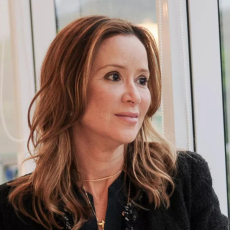Can you tell us about Sigma's unique approach to sustainable mining, and how it has helped you become a preferred partner in the automotive industry?
Sigma is fundamentally unique because of our "triple zero" mission—zero carbon, zero tailings, and zero hazardous chemicals. We initially invested in this project right after the first dam failure in Brazil, which had severely damaged the social license for mining in the country. Our objective was to prove that mining could be done sustainably and in harmony with both the environment and local communities. Over the past six years, we have accomplished that mission. We managed to significantly reduce our carbon emissions before offsetting the remaining amount to achieve zero carbon. For tailings, we had to innovate and create a dry-stacking process, which allowed us to become tailings-free. Lastly, we opted for a non-traditional, more sustainable lithium processing route, which allowed us to avoid using hazardous chemicals.
Our approach has led us to become a favored partner for the auto industry. The industry now understands life cycle analysis—measuring the environmental impact not just on air, but also on water and soil. Before offsetting, our CO2 emissions were as low as 0.25 tons of carbon per ton of lithium, which is significantly lower than the industry average. These efforts weren’t simply a matter of buying carbon credits; it required substantive work and innovation.
You mentioned that Sigma was the first new large-scale lithium producer in five years. How did you manage to survive and thrive in such a challenging environment, particularly during the downturns in the industry?
Our survival and success come from our focus and the steady capital backing from our private equity fund, A10 Investimentos, which I co-founded. We were committed to our mission even when the industry faced downturns. For nearly four years, from 2018 to mid-2021, zero dollars flowed into the lithium industry, but we kept investing. We believed in the fundamental market drivers and stayed the course, and now it’s all playing out. Government support in markets like the U.S. and Europe, which emerged post-pandemic, have validated our long-term view.

We’ve also adopted a unique approach in Brazil where we don’t just mine but also industrialize, adding significant value to our products. This gives us the financial leeway to make some non-economic decisions for the sake of environmental sustainability. For instance, we decided to preserve a seasonal stream running through our mining pit because it serves as a water source for local communities.
Decisions like this earned me the nickname “the hippie CEO” back in 2019, but these are the kind of choices that set us apart and have allowed us to transform not just our company but also set a precedent for the industry.
Could you elaborate on how you found a market for tailings, essentially turning a byproduct into an asset? Is this a business model that other companies in the industry can adopt?
Absolutely. Our choice to opt for a more sustainable lithium processing route initially seemed like a trade-off against profitability. However, we then found a market for the tailings, which allowed us to recoup that supposed loss. By creating value from what is often considered waste, we’ve shown that sustainability and profitability aren't mutually exclusive.
I believe this is a model that can be replicated across the industry. Companies can indeed turn byproducts into assets, thereby offsetting costs and contributing to sustainability. This approach does more than just benefit Sigma; it could transform the way critical minerals are sourced and processed, setting a new industry standard that aligns with the sustainability goals of our partners, particularly in the auto industry.
What led you to build a full-scale pilot plant for lithium processing instead of focusing on drilling, which is the traditional route for junior mining companies?
In 2018, when we went public, we took a non-traditional approach. Rather than following the junior mining business model of extensive drilling after an IPO, we invested two-thirds of our IPO proceeds in building a full-scale pilot plant for lithium processing on site. This was part of a strategic choice to evaluate the processing methods, specifically examining dense media separation versus flotation methods for lithium. Dense media separation is a gravity-based and environmentally sustainable method, while flotation is chemical-based and less environmentally friendly. Having the pilot plant helped us realize that dense media separation was a viable and eco-friendly option for our specific mineralogy, even though it meant sacrificing some recovery percentage.
How are you differentiating your business in terms of innovation and sustainability, especially considering your operations in Brazil?
We didn't invent new components; rather, we assembled existing components in a novel way, like putting together Legos in a unique formation. In Brazil, we are part of the emerging Lithium Valley, where the focus is not just on industrial development but also on significant social impact. Our operations are in one of the poorest regions of the country, and our activities have a measurable social impact. On the environmental side, Brazil offers us a unique advantage: its green energy grid. This allows us to focus only on reducing our scope one emissions, as we don't have to worry about cleaning up a dirty energy grid. This aligns perfectly with our vision of sustainability, making Brazil an ideal location for our activities.
What's your take on the future of the lithium industry, especially in terms of sustainability and market demands?
Our experience has shown that there's an increasing market not just for lithium but also for its byproducts. This makes our process not just sustainable but also economically viable. As for the lithium market itself, we're seeing a strong upward trend. We've witnessed lithium prices go from a bottom-of-the-cycle $600 to today's $3,500, reflecting increasing demand. Moreover, Brazil's abundant, cheap, and renewable power gives us a unique advantage in aligning our operations with the global push toward a more sustainable lithium industry. In that sense, we see Brazil as the home of new, green industrialization.
You’ve recently established the Green Lithium Institute (“Instituto Litio Verde") and initiated a microcredit program. Could you elaborate on how these endeavors contribute to your corporate social responsibility goals, especially concerning your impact on local communities?
Absolutely, our corporate social responsibility extends beyond just the lithium business. We recently set up the Green Lithium Institute which was endowed with the existing remaining “founders royalty” of around $100 million. The foundation’s mission is to expand social sustainability, especially through our microcredit program. This program is modeled after the Grameen Bank in Bangladesh and aims to empower roughly half the female population in the region. By offering these small, low-interest loans, we're able to help women monetize their cultural skills such as cooking, sewing, and arts and crafts.
The impact of this initiative is profound. We've enabled economic inclusion for women who were once invisible and marginalized. This not only provides them financial freedom but also the ability to leave abusive environments, thereby reclaiming their identity and citizenship. Every time I participate in the microcredit roundtables, I witness transformations that affirm our purpose. Our efforts go beyond just financial metrics; they change lives and give people a renewed sense of worth. This is the kind of social sustainability we aim to achieve.






